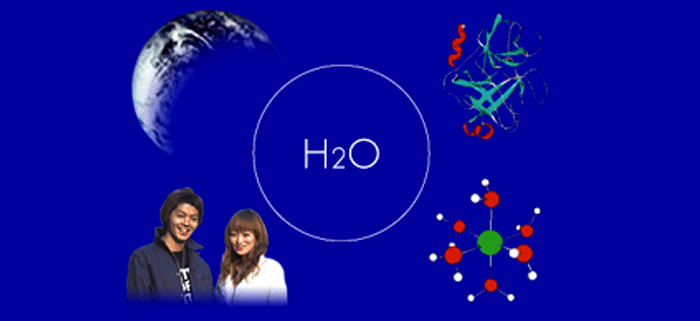
Organic Reactions Explored in Water
Water is a sine qua non of sustainability in global environment and living things. The pivotality of water intrigues us in molecular science.
All living things, including human being, are made up of water. A number of chemical reactions performed in a living organism made up its metabolism, maintaining chemical and ionic gradients (homeostasis). Most enzymes provide a sequestered and somehow hydrophobic environment to exclude water, where chemical reaction is regulated tightly. It means that in vivo enzymatic reaction achieves fine synthesis in water.
To synthesize pharmaceutical or chemicals, organic reactions have been long deemed to be conducted in organic solvents, owing to the compatibility and immiscibility between water molecules and many reagents or reactive species. Most organic solvents are, however, harmful to human body and environment, which urged chemists to seek “greener” solvent alternatives (non-toxic, inexpensive, and benign to environment). We believe that water is the most attractive candidate up to now. In addition, water sometimes provides us with a potential to achieve unique reactivity and selectivity that cannot be observed in conventional organic solvents. Our group has extensively engaged in the development of multifarious catalytic systems that are water-compatible. One of our fruits, Lewis Acid‒Surfactant-combined Catalyst (LASC) is regarded to be a highly efficient catalyst that works in water, forming hydrophobic micelle along with water-tolerant Lewis acidity. A variety of reactions such as aldol reactions are efficiently promoted in the presence of LASCs in water even though organic solvent is not used at all.
One of our biggest concerns is exploring catalytic asymmetric reactions in water toward efficient synthetic methodologies of optically active compounds. To date, we have developed enantioselective Mannich-type reactions catalyzed by chiral zinc catalyst, followed by enantioselective hydroxymethylation reactions, Michael-type addition reaction of thiols, and enantioselective protonation reactions catalyzed by chiral scandium catalyst in water. Furthermore, we have spotlighted zero-valent metals, and metal oxides or hydroxides that have not been used so far. Their outstanding catalytic activities in aqueous environments are discovered, leading to a set of highly stereoselective bond-forming reactions such as allylation reactions of aldehydes or ketones, boron conjugate addition reactions. These reactions do not proceed (or are not selective) at all in the absence of water, which underscores the positive effect of water that involves in reaction mechanism rather than the role as an alternative solvent.
Since the advent of organic chemistry, Friedrich Wӧhler’s urea synthesis in 1828, it has been systematically cultivated in organic solvents. In contrast, our intensive researches have disclosed a number of examples on new reactivity and selectivity observed in chemical reactions performed in water that are not obtained in organic solvents. Now the curtain rises to exploit water positively as a solvent. Since independently-developed “organic chemistry in water” cannot be written by the traditional organic chemistry cultivated in organic solvents, “organic chemistry in water” wants systemizing. An enzyme, an ultimate tool created by nature, would play a prominent role in chemistry systemized in water, whereas our ultimate goal is to create catalytic activity superior to enzymatic one.
Topics
- α-selective allylation, allenylation or propargylation
- Highly selective Mukaiyama aldol reactions in aqueous environments
- Toward asymmetric direct-type aldol reaction in water
- Asymmetric conjugate addition
- Advanced control of proton transfer in water
- Catalytic dehydrative reaction using Brønsted acid catalyst

